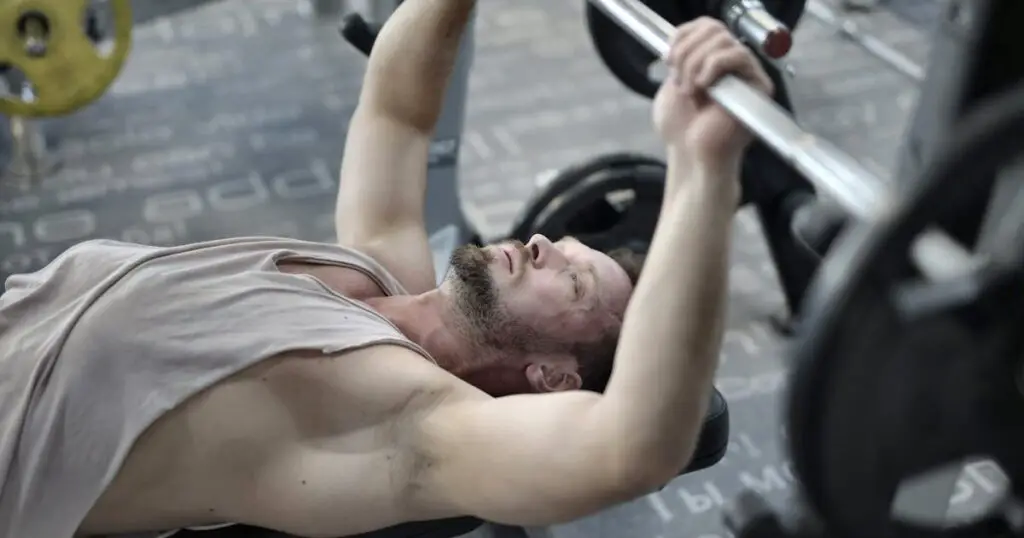Key Takeaway: To gain muscle, lift weights that allow you to perform 6-12 reps per set, reaching muscle fatigue by the final reps. Use progressively heavier weights as you grow stronger, focusing on compound movements for optimal growth.

As we strive towards a healthier lifestyle, weightlifting has become increasingly popular and is now considered an essential part of any workout routine. Building muscle not only improves our physical appearance but also has numerous health benefits such as boosting metabolism, increasing bone density, and reducing the risk of chronic diseases.
However, one common question that arises when it comes to weightlifting is: “How much weight should I lift for optimal muscle gain?” In this article, we will delve into the science behind muscle growth and provide guidelines on how to determine the right amount of weight to lift for your fitness goals.
How Do Muscles Grow?
Before we can answer the question of how much weight to lift, it is essential to understand how muscles grow. When we engage in resistance training, we are essentially causing tiny tears in our muscle fibers. Our body then responds by repairing and rebuilding these fibers, resulting in stronger and larger muscles.
This process is known as muscle hypertrophy and can be achieved through two mechanisms: mechanical tension and metabolic stress. Mechanical tension refers to the amount of weight being lifted, while metabolic stress is caused by the buildup of metabolites during high-intensity exercises.
How To Build Muscle
To build muscle effectively, we need to challenge our muscles and stimulate the repair and growth process. This can be achieved through progressive overload, which involves gradually increasing the weight or intensity of our workouts over time.
When it comes to weightlifting for muscle gain, the general rule is to lift a weight that allows you to perform 8-12 repetitions with good form. This range is known as the hypertrophy rep range and has been shown to elicit maximum muscle growth.
Additionally, it is essential to vary your exercises regularly as our muscles adapt quickly to repetitive movements. Incorporating different types of resistance training such as free weights, machines, and bodyweight exercises can help prevent plateaus and stimulate muscle growth.
Why Rest is Important
While it may be tempting to push ourselves to the limit every day, rest is a crucial component of any successful workout routine. Muscles need time to recover and repair after being challenged during exercise. Adequate rest also allows our bodies to adapt and grow stronger between workouts.
For optimal muscle gain, it is recommended to have at least 48 hours of recovery time for each muscle group before working them out again. This means if you do an intense leg workout on Monday, wait until Wednesday or Thursday before training your legs again.
Neglecting rest can lead to overtraining, which can result in injury and hinder muscle growth.
Resistance vs. Reps
When it comes to building muscle, there is often a misconception that lifting heavier weights will automatically result in bigger muscles. While resistance training is crucial for muscle growth, the number of repetitions we perform also plays a significant role.
As mentioned earlier, the hypertrophy rep range falls between 8-12 repetitions. However, research has shown that lifting lighter weights with higher reps can also stimulate muscle growth by promoting metabolic stress.

Incorporating both heavy weights and higher reps into our workout routines can help us achieve maximum muscle growth.
FAQs: How Much Weight to Lift for Muscle Gain?
Will lifting heavy weights make me bulky?
No, lifting heavy weights alone will not make you bulky. It takes a combination of progressive overload and proper nutrition to build significant muscle mass.
Can I build muscle without lifting weights?
Yes, bodyweight exercises can also be effective in building muscle. However, as we become stronger and more advanced, it may be necessary to add external resistance for continued progress.
Is there an optimal rest period between sets for muscle gain?
Rest periods vary depending on the intensity of the exercise and individual fitness levels. As a general guideline, 1-2 minutes of rest between sets is recommended for muscle growth.
Conclusion
In conclusion, the amount of weight to lift for muscle gain depends on various factors such as individual fitness level, exercise intensity, and recovery time. The key is to challenge our muscles within the hypertrophy rep range and allow enough rest for proper recovery.
Remember to always listen to your body and adjust the weight or reps accordingly. With consistency and patience, you can achieve your desired muscle gains in a safe and effective manner. Keep pushing yourself towards a stronger and healthier version of yourself!


Leave a Comment
You must be logged in to post a comment.